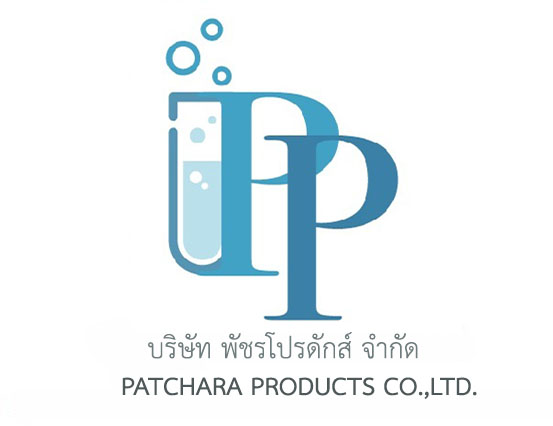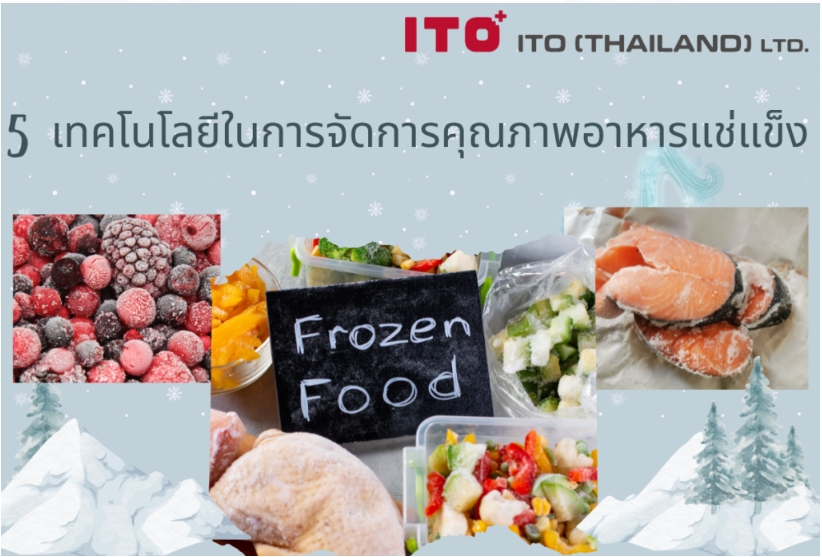Freezing is a method of food preservation, which is popularly used in food that spoils quickly, whether it is fresh food ready to cook, ready to eat or food that has nutritional value that can easily deteriorate or contains substances that are sensitive to temperature, light, oxygen, etc. It uses the principle of making water to solidify the water in the product quickly, causing the molecules of the substances to be unable to react with each other. Therefore, the food has a longer shelf life. It also inhibits the growth of microorganisms and helps kill parasites, such as the USFDA (1) and has led to the control of parasites in raw fish, such as for sushi and sashimi, by freezing fish at a minimum of -20 degrees Celsius for 7 days or storing at 35 degrees Celsius for 15 hours to control parasites in fish (conditions may also depend on the size of the fish).
Food additives Currently
In general, the spoilage of frozen food is often caused by changes in various aspects of the quality of the food (2) that affect consumer acceptance more than safety, whether it is caused by physical changes, such as the movement of water in the system. If during freezing, the temperature is reduced at a rate that is not fast enough, the water in the food system moves according to osmotic pressure. This causes food cells to lose moisture, cell walls to be damaged, lose good texture, and more liquid loss (Drip loss) when the food is thawed. During storage, if the conditions are not suitable, such as temperature fluctuations, ice crystals may become larger, damaging the texture or cell walls of the food, including freezer burn from the loss of moisture on the surface of the food that is stored in the package, etc. Chemical changes may result from chemical reactions of enzymes, oxidation of fat, denaturation of proteins, deterioration of flavors, pigments, or functional substances such as vitamins, etc. (3) Microbial growth is usually not a major issue in freezing conditions because it can inhibit the growth of microorganisms. However, if the temperature fluctuates a lot, it may give the microorganisms a chance to grow again. In addition, freezing only inhibits the growth of microorganisms, not eliminating all or any microorganisms. Therefore, taking into account good hygiene in the production process is still necessary to prevent the risk of cross-contamination of microorganisms to ensure the safest food. The changes that occur in frozen food will have a faster rate of spoilage if the temperature fluctuates or there is a range of temperatures higher than it should be, such as a defect in the refrigeration or electrical system, loss of temperature from walls that are not insulated enough, loss of temperature maintenance from opening and closing the door, condensation around the door, making it impossible to close the door tightly, etc., causing the food to spoil faster than expected until the quality is not acceptable to consumers or there is a growth of microorganisms that exceeds the safety level.
5 Technologies for Managing the Quality of Frozen Food
Currently, various technologies and innovations have played a role in the frozen food industry to improve the quality of frozen food and make energy use more efficient. They vary in each dimension, from formula development to good factory structure design. They can be divided as follows:
1. Food additives
Currently, there is a group of substances called cryoprotectants that can help reduce damage to the texture of food from freezing and thawing. They are divided into groups of substances with small molecules that can penetrate into cells and protect cells from damage, such as dimethyl sulfoxide and proline, and groups with large molecule molecules. Work outside the cell by using the mechanism of adjusting the shape of ice crystals to have a negative effect on the cell, such as antifreeze, proteins, Polvinyl alcohol, polvampholytes, etc. (4). These substances help reduce the penetration of ice crystals that may puncture cells or cause poor food texture or help reduce the freezing point of the system to darken. Therefore, the introduction of these substances in the development of frozen food recipes is one option to improve the quality of frozen food.
2. Pretreatment process
The use of other processes can help reduce changes in the quality of frozen food, such as blanching to inhibit enzymes that cause food to change color, flavor, and taste. It is often used in vegetable and fruit products (2) or the introduction of quality-enhancing substances (such as color, flavor, texture, or cryoprotectant, etc.) into food before freezing. Which may use pressure to push substances into the food (5)
3. Novel Freezing technology
New methods of freezing food aim to increase the rate of freezing and increase economic value (2), such as using pressure during freezing to reduce ice crystal formation or the impingement jet freezing process to speed up the freezing rate, etc.
4. Temperature fluctuation monitoring
Temperature fluctuation monitoring is an indirect indicator of the quality of frozen food. Because the deterioration of this group of foods is often related to temperature, there may be an indicator or sensor used to set up a system to track the quality of the entire food system in real time.
5. Entrance temperature control
The entrance and exit of the warehouse, whether it is the entrance of the barn or the entrance of a car hitting the goods, is the point with the highest risk of temperature changes in the cold storage system for food storage. In addition to losing the cold temperature, in the case of that area
Reference from https://www.itohygiene.com/th/blog/2022/10/458/

